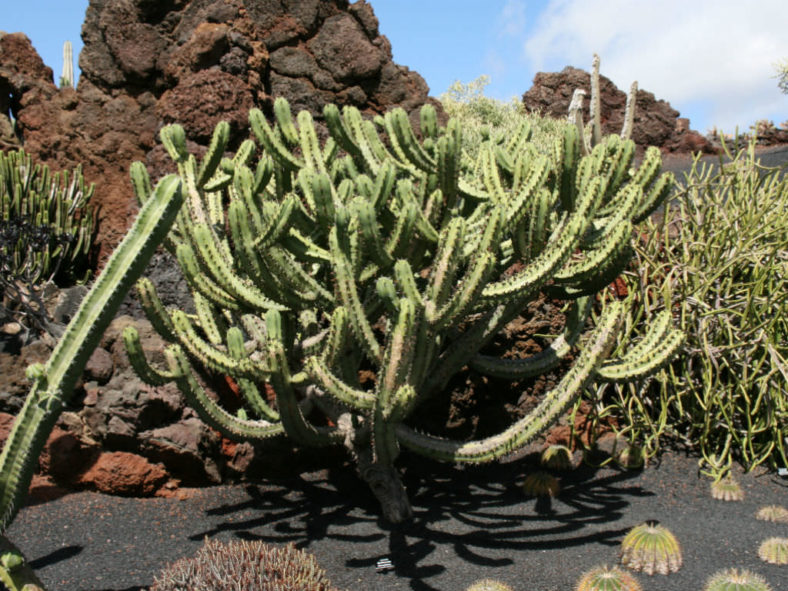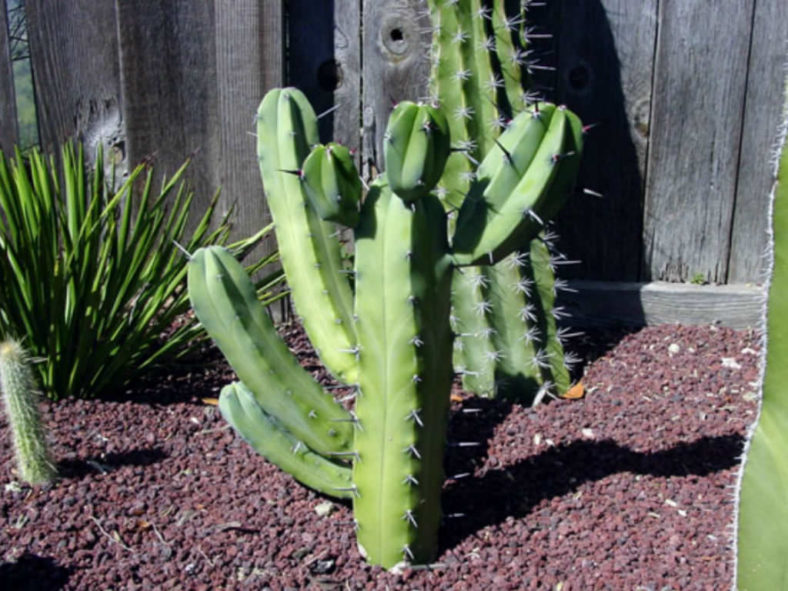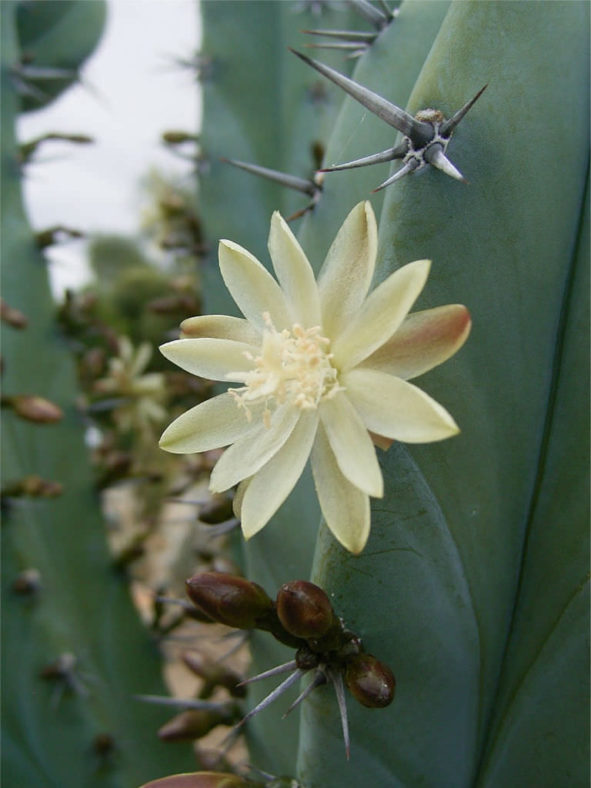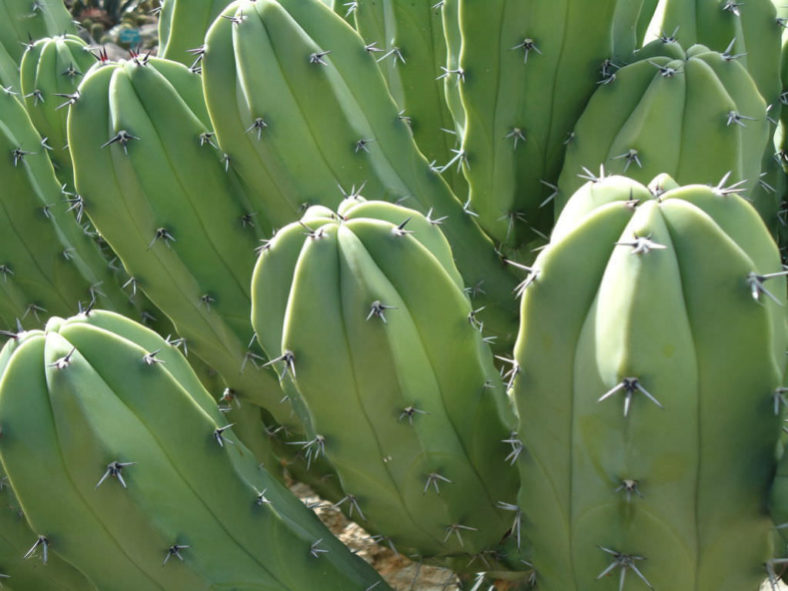Scientific Name
Myrtillocactus geometrizans (Mart. ex Pfeiff.) Console
Common Name(s)
Bilberry Cactus, Blue Candle, Blue Flame, Blue Myrtle Cactus, Our Father, Whortleberry Cactus
Synonym(s)
Cactus geometrizans, Cereus garambello, Cereus geometrizans
Scientific Classification
Family: Cactaceae
Subfamily: Cactoideae
Tribe: Echinocereeae
Genus: Myrtillocactus
Origin
Myrtillocactus geometrizans is native to central Mexico. Known from at least 267 localities, it grows in tropical deciduous forest, xerophilous scrub, and less frequently in grassland in some areas of the southern Chihuahuan Desert at elevations from 3,000 to 7,000 feet (910 to 2,130 m).
Description
Myrtillocactus geometrizans is a large, highly branched cactus with glaucous blue-green stems with 5 to 8 ribs lined with areoles, each bearing 3 to 9 very short spines. It can grow up to 14.8 feet (4.5 m) tall, columnar at first, but it becomes tree-like with age, resembling a candelabra. The crown can reach 16.4 feet (5 m) in width. The stems can measure up to 4 inches (10 cm) in diameter, with the ribs approximately 1 inch (2.5 cm) in depth and the areoles about 1 inch (2.5 cm) apart. The spines can grow up to 0.5 inches (1.3 cm) long.
The nocturnal flowers are greenish-white and appear from the areoles in spring on large mature plants only, about 2 feet (60 cm) tall. They are funnel-shaped and can reach up to 1.4 inches (3.5 cm) in diameter. The edible fruits are dark red or blue when ripe, oblong, measuring up to 0.8 inches (2 cm) in diameter.

Hardiness
USDA hardiness zones 9a to 11b: from 20 °F (−6.7 °C) to 50 °F (+10 °C).
How to Grow and Care
In summer, place Myrtillocactus in direct sunlight. In winter, find a cooler, light spot. That will allow it to go well-rested into next spring, making it more likely to flower.
This easy-care plant doesn't want a lot of water. Allow the soil to dry out before you give it another drink. Keep the soil completely dry in winter. These cacti need a well-drained soil mix with small gravel added to ensure drainage.
Myrtillocactus are semi-hardy. Ensure your cactus is not exposed to temperatures below 25 °F (-4 °C, or may die. Nevertheless, it is good advice never to let the nighttime temperatures fall below 50 °F (10 °C).
Feed your Myrtillocactus monthly in spring and summer using special cactus food.
Since they are big-sized plants, they need plenty of space for their roots. Repotting should be done every other year or when the plant has outgrown its pot.
Learn more at How to Grow and Care for Myrtillocactus.
Forms and Cultivars
- Myrtillocactus geometrizans f. cristatus
- Myrtillocactus geometrizans f. cristatus 'Variegatus'
- Myrtillocactus geometrizans 'Fukurokuryuzinboku'
Links
- Back to genus Myrtillocactus
- Succupedia: Browse succulents by Scientific Name, Common Name, Genus, Family, USDA Hardiness Zone, Origin, or cacti by Genus
Photo Gallery
Click on a photo to see a larger version.



